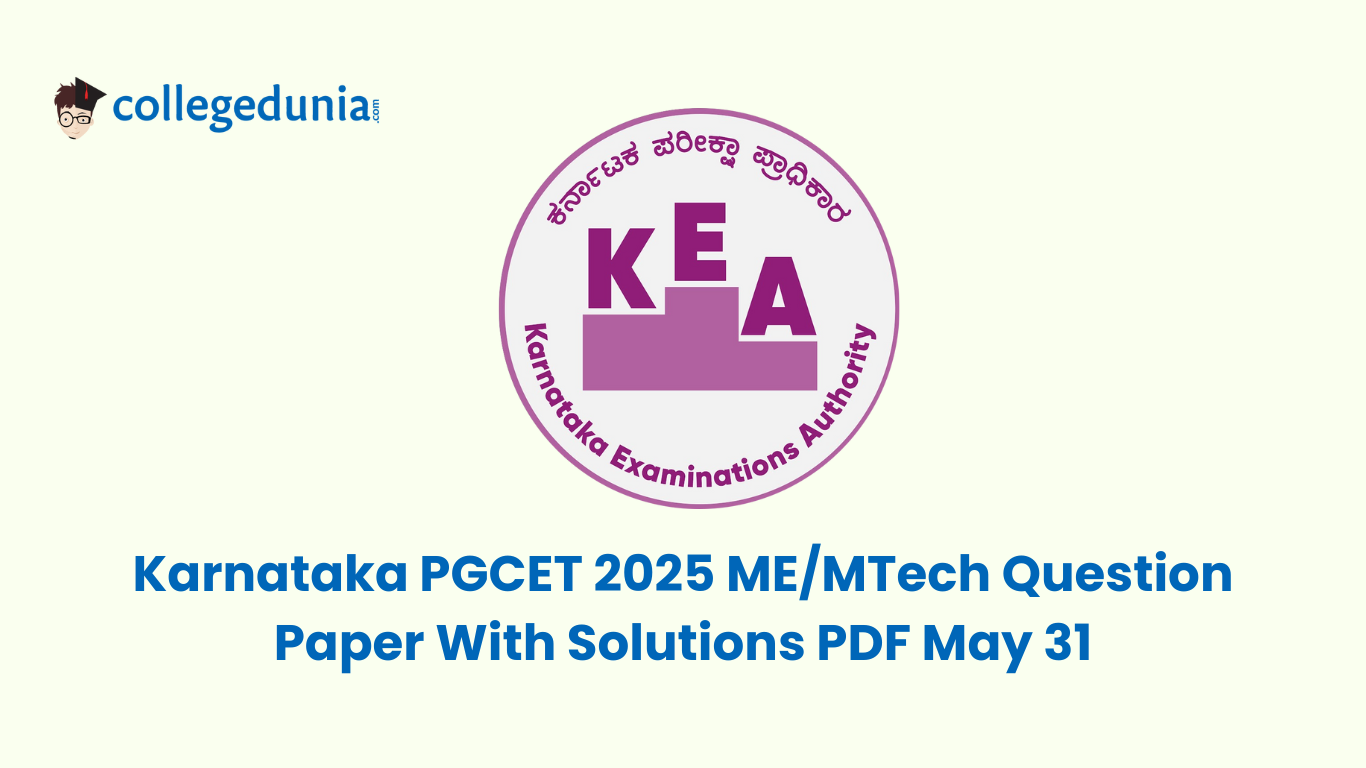The Karnataka PGCET 2025 Exam for M.E./M. Tech was conducted by KEA on May 31, 2025, in a single shift from 2:30 P.M. to 4:30 P.M. The Exam was conducted offline in a PBT Mode across various exam centres in Karnataka.
The Karnataka PGCET 2025 Question paper included 100 MCQs, with 1 mark for each correct answer and with no negative marking in a total time duration of 2 hours.
Karnataka PGCET 2025 M.E./M.Tech Question Paper with Answer Key
| Karnataka PGCET 2025 M.E./M.Tech Question Paper with Answer Key | Download PDF | Check Solutions |

Solve the following differential equation:
\[ \frac{d^2y}{dx^2} + 4\frac{dy}{dx} + 4y = 0 \]
Which of the following is not a valid data type in C?
The efficiency of a Carnot engine depends on:
In a series RLC circuit, if the frequency of the applied voltage is increased, the impedance of the circuit:
The modulus of elasticity of concrete is approximately:
Which of the following is the main component of natural gas?
In a transistor, the current gain is defined as:
The primary function of a Wheatstone bridge is to measure:
In a communication system, the bandwidth of a signal is:
Which of the following is a non-invasive method to measure blood pressure?
Karnataka PGCET M.E./M.Tech Expected Topic-Wise Weightage
The Karnataka PGCET M.E/M. Tech Exam 2025 included 100 MCQs, each carrying 1 mark, with no negative marking.
The Karnataka PGCET Question paper was divided into 2 sections: Part A, including 50 questions from the core subject, and Part B, including 50 questions from the specialised Topics
| Discipline | Major Topics Covered | Weightage (Marks) |
|---|---|---|
| Computer Science |
|
35–40 |
|
20–25 | |
|
10–15 | |
| Mechanical Engineering |
|
30–35 |
|
20–25 | |
|
15–20 | |
| Civil Engineering |
|
35–40 |
|
20–25 | |
| Environmental & Geotechnical Engineering | 15–20 | |
| Electrical Engineering |
|
35–40 |
|
20–25 | |
|
10–15 |
Karnataka PGCET M.E./M.Tech 2025 Expected Difficulty Level
The Difficulty level of Karnataka PGCET 2025 M.E/M.Tech Exam is expected to be of moderate difficulty level, the candidates with good understanding in the undergraduate syllabus can access the same.
As per the precious year question paper the exam focuses more on the conceptual clarity than on the tricky or time-consuming questions.
Expected Difficulty Level by Discipline
| Branch/Subject | Part A (Core Subject) | Part B (Specialization) | Overall Difficulty Level |
| Computer Science | Moderate (standard theory + logic) | Moderate to Difficult (data structures, algorithms) | Moderate |
| Mechanical Engineering | Moderate (basic formulas & concepts) | Moderate (application-based, some numericals) | Moderate |
| Civil Engineering | Moderate (structural & surveying concepts) | Moderate (design & geotech focus) | Moderate |
| Electrical Engineering | Moderate to Difficult (circuits, machines) | Moderate (control systems, power systems) | Moderate to Slightly Difficult |
| Electronics | Moderate (basic electronics + digital) | Moderate to Difficult (VLSI, communication) | Moderate |

.png?h=56&w=56&mode=stretch)





Comments